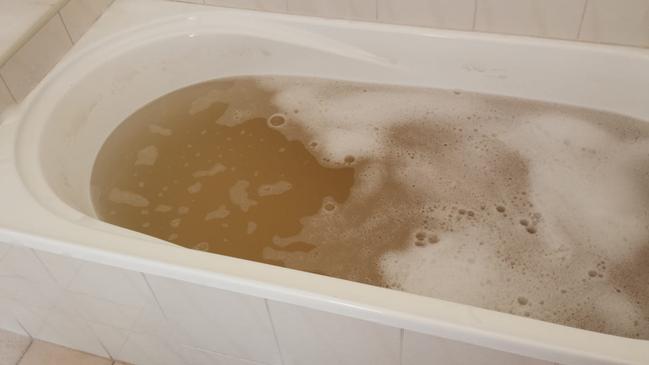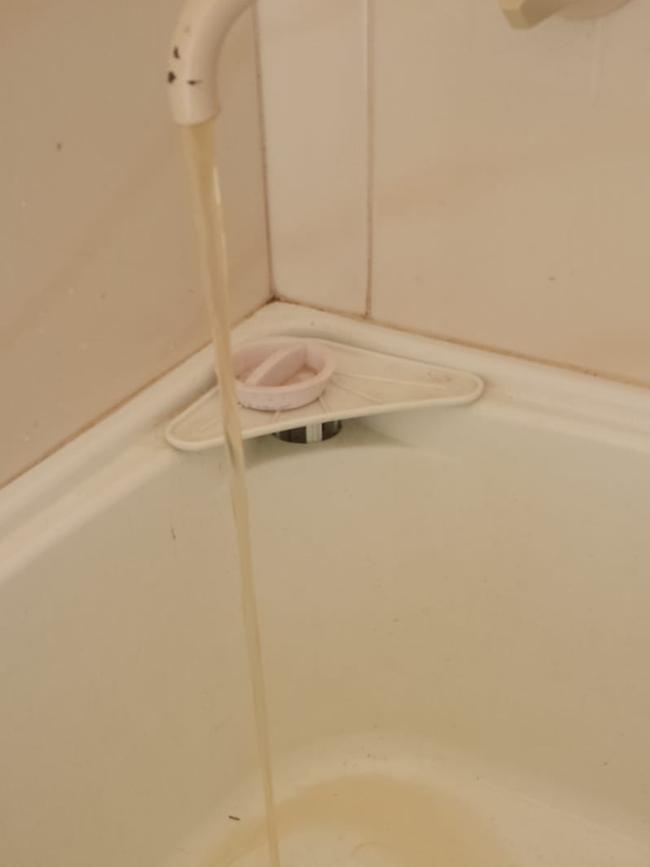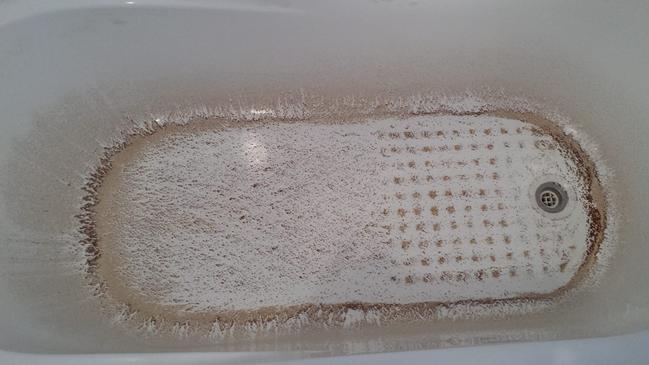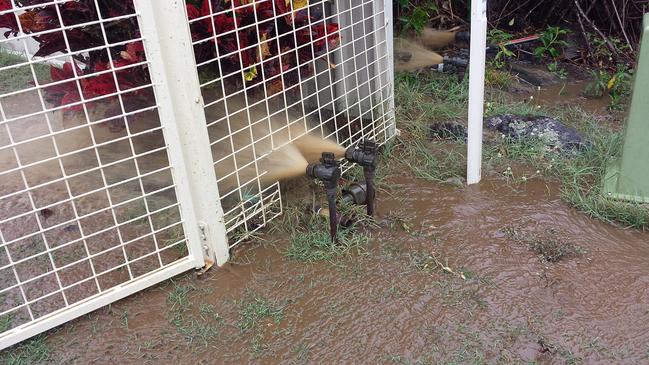DIRTY WATER: Council responds to quality concerns
Clarence Valley Council reveals plans to fix region’s ongoing water quality issues.

Grafton
Don't miss out on the headlines from Grafton. Followed categories will be added to My News.
It is seen as one of our most basic needs and rights, that of clean water – but for many Clarence Valley residents, the sight of discoloured water from the taps has long plagued the area.
Surrounded by plentiful river systems, a large scale water supply dam and a longing for a time when anecdotally we had the best water in the country, many have questioned what Clarence Valley Council are doing about the ongoing issue.
Councillor Karen Toms took the opportunity at last week’s committee meetings to question general manager Ashley Lindsay about proposed plans to help with fixing the issue for residents.
Mr Lindsay explained that items in the upcoming budget would help address the problem, and that a much talked about water filtration system would not be a definitive solution to all the problems.
In response, The Daily Examiner put forward a series of questions to Council, to which manager of water Cycle Greg Mashiah responded.
It was said there were items coming up in the budget to do with fixing the water problem – what specifically will be proposed?
There is a proposal in the draft 2020/2021 operational budget for targeted air scouring of mains in Yamba and Iluka to reduce sediment deposits.
Do you believe there is a water quality issue?
One of the most challenging water quality issues faced by council is a dirty water event which is impossible to predict in duration, frequency and location through the pipeline. During these events, the water quality exceeds the aesthetic criteria of the Australian Drinking Water Guideline and creates numerous problems for the end user. Council’s main goal is to provide drinking water that is in compliance with the Australian Drinking Water Guideline and in line with our adopted standard of service which means the water is less than 5NTU (a measure of turbidity) 95 per cent of the time. In order to address the issue, council undertakes routine and targeted flushing of the mains, selectively draws water from the source with the best quality, monitors chlorine residual to the end of the pipeline and strategically plans water mains to reduce dead ends where possible.

Why is a $40 million filtration system being bandied around in the community as a solution?
Having a water source that is both clean and secure is one of the most important factors contributing to drinking water quality. The majority of Clarence Valley is privileged to have access to the water of the Nymboida River and the storage capacity of Shannon Creek Dam which provides us with valuable water security.
However, our existing treatment methods do not entirely protect us from the potential risk of poor water quality resulting from the impacts of climate change and environmental degradation. For example, council is restricted under its license from taking water from the Nymboida River when the flow is less than 225ML/day, which historically has occurred 5 per cent of the time.
During these periods, Council relies on the Shannon Creek Dam storage as a water source. The Shannon Creek Dam holds plenty of water, however the quality of the water is reliant on many factors including weather (especially rain), environmental contamination, algal growth and bush fires which could make the water unsuitable for use with our existing treatment system.
Our existing methods of treatment have a limited capacity to adjust to raw water changes. The main way Council currently manages its water quality is by “selective extraction”, where water is generally only taken when the turbidity is less than 5NTU. As outlined in Table 11 of the interim Drought Management Plan adopted by Council in October 2020 (page 35 of https://www.clarence.nsw.gov.au/page.asp?f=RES-GKQ-61-55-36), in the period 2013-2020 the Nymboida flow and turbidity was only suitable for extraction (ie flow >225ML/day and turbidity
Council is undertaking a “secure yield study” as the first stage of updating its Integrated Water Cycle Management (IWCM) strategy which we believe will demonstrate that an upgraded treatment plant is required to enable extraction of water when turbidity is >5 NTU to ensure the system has sufficient capacity for current and future demands. The state government regulator (DPIE – Water) will require Council to adopt its IWCM strategy to demonstrate there is a requirement for a major treatment upgrade.
The investigation of further treatment (filtration) was also included as a risk management strategy in the new Drinking Water Management System which was adopted by Council in May 2020.
Council has allocated funds in the 2020/2021 budget for scope and design of Rushforth Road 32ML replacement reservoir, and the scoping study includes concept design of a possible future treatment upgrade including filtration to ensure future treatment is feasible with the replacement reservoir.
Will it fix the problem, or is there another underlying matter?
There are many contributing factors associated with dirty water events in the pipeline including but not limited to historical accumulation of sediment in the pipeline, a vast distribution system which challenges chlorine residuals in areas, changes in flow rates during peak periods of usage, seasonal fluctuations in water temperature, natural biofilms forming in the pipeline and natural and added minerals in the water. A filtration plant will improve water quality by reducing the turbidity of the treated water, improve our capacity to remove potential pathogens in the raw water, improve water colour and organics, improve taste and odour associated with algae and our protection against potential algal toxins.
While a filtration plant will improve water quality as a whole, Council cannot guarantee that it will completely eliminate all dirty water events due to the additional contributing factors, but there should be a significant improvement. Even if a filtration plant is constructed, because the natural water supply is very soft Council will need to continue to add lime to the water to increase its hardness. Council has added lime to its water supply since 2008 because the soft water means that over time the water dissolves metals such as iron, zinc and copper that make up water pipelines and fittings.

Even with the added lime, our water is still classified as “soft”. Properties which have water sitting in their household pipelines may still have these metals dissolved out due to the soft water. Customers may see the lime as a brown scale in their kettles or, if they have a water filter installed, the filter generally removes the lime which is why water filters clog up so quickly in the Clarence. Even if a filtration plant was constructed, because we will continue to add lime customers will still find they have a brown scale in their kettles and their filters will still clog up quickly. The best way to remove the iron scale from kettles is to boil vinegar in the kettle.
Information on the NSW Health drinking water monitoring program can be found here: https://www.health.nsw.gov.au/environment/water/Pages/drinking-water-quality-and-incidents.aspx. The website contains a list of NSW drinking water quality incidents and the most recent CVC incident was in May 2013 which we suspected was a result of contaminated rainwater from the Maclean reservoir roof (ie from bird droppings) entering the reservoir. The February and March 2013 events were related to a mains break during the flood (Ashby) and contaminated roof water being blown by the East Coast Low associated with the flood into the reservoir (Minnie Water). These events occurred before the rechlorination system at Maclean was constructed. Note that the majority of drinking water incidents listed on the NSW Health website occurred in filtered supplies.

What should people do if they have dirty water issues – for drinking water and/or pools?
Council encourages you to contact customer services during working hours or the after-hours call centre (6626 6858, council@clarence.nsw.gov.au) outside of working hours if you are experiencing dirty water so that a member of the water cycle team can flush the pipelines. If you have had water delivered via tank truck to fill your pool, ensure that the water they have sold you is clean. Water carters have been requested to advise Council if they identify dirty water at any of the fill points available to them and have been advised not to fill their tanks with dirty water.
Originally published as DIRTY WATER: Council responds to quality concerns


